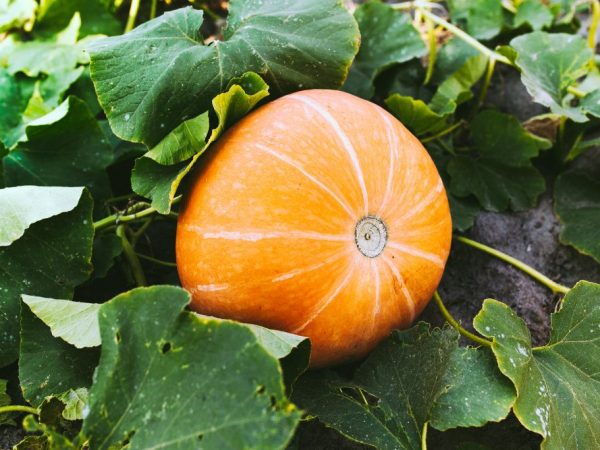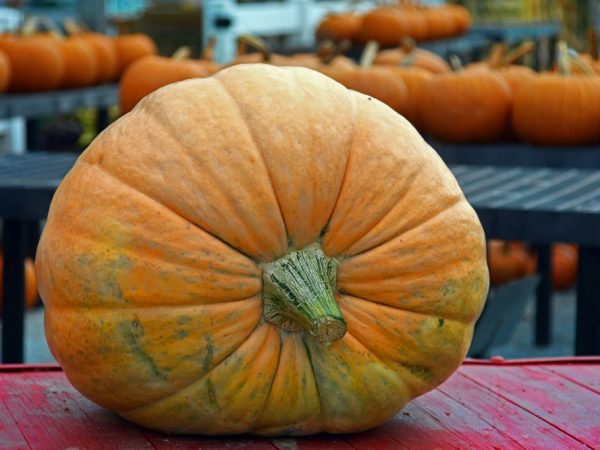What is pumpkin: vegetable, berry or fruit
Sometimes there are disputes about what a pumpkin is - is it a vegetable, a fruit or a berry? This issue needs to be approached from different points of view. According to botanists, it is rather a berry, just like tomatoes or watermelons. But for a gardener or a cook, it is rather a vegetable. It should be assumed that the polemic on this topic is purely terminological.

What is pumpkin: vegetable, berry or fruit
History reference
The pumpkin has been grown for so long that it is almost impossible to determine its exact origin.
Some researchers believe that it was brought to Europe from China, while others consider South America to be its homeland.
But, in fact, it is almost impossible to accurately determine the origin, because it is actively grown on almost all continents (except Antarctica).
Also, the pumpkin was common among the Aztec tribes, as evidenced by many documents. In Asian countries, one of the applications was to make vessels for liquids and even cages for small birds.
general characteristics
According to the scientific classification, pumpkins belong to herbaceous plants, the Pumpkin family.
Usually, the word "pumpkin" refers to starchy fruits that are cultivated as a forage and food plant.
If we talk about the botanical description, then this is a one - or perennial plant with large white or yellow flowers and rough stems creeping along the ground. Lobed leaves.
The fact that a culture does not grow on a tree refutes its belonging in fruit.
The fruits, as a rule, have a hard skin, and inside are numerous flattened seeds that are separated from the pulp. And this, by the way, is proof that Pumpkin is not a berry, which means, by the method of elimination, it can be safely called a vegetable.
Beneficial features
Surely many of us have heard about the beneficial properties of pumpkin, but few people know that it contains 5 times more pro-vitamin A, compared to carrots, and 3 times more, compared to beef liver.
Almost everything is useful in this plant - seeds, pulp and juice.
What else is contained in the fruits:
- trace elements: fluorine, manganese, iodine, cobalt, copper, iron and zinc.
- macronutrients: sodium, calcium, phosphorus, potassium, magnesium.
- vitamins: group B, folic acid, A, C and E.
- glucose.
- fructose.
- alimentary fiber.
- pectins.
Pumpkin types

Pumpkin tastes different from varieties
There are several main types that differ greatly in characteristics.
Hardcore
As you might guess from the name, when ripe, hard-peeled pumpkins have a very thick skin.
This species is valued for the fact that it ripens early, has not very large fruits and tasty cream-colored seeds.
In addition, bush varieties of this variety are often found, which is very convenient when it comes to saving space.
The group includes: Acorn, Spaghetti, Freckle, Almond and others.
Large-fruited
The species is famous not only for its size, but also for its taste.
Representatives of large-fruited pumpkins are considered one of the sweetest. In addition, they tolerate temperature changes well and can be stored for a long time after harvest.
Large-fruited include: Dawn, Candy, Crumb and Hundred-Pound.
Nutmeg
Muscat pumpkins are considered the most vitamin and tasty.
Plants of this type are recommended to be grown through seedlings.
It is worth mentioning that these are very thermophilic varieties, so they must be planted exclusively in the southern regions.
Muscat include: Vitaminnaya, Butternat and Prikubanskaya.
Who is part of the pumpkin family
Before considering which vegetables also belong to pumpkin, it is necessary to understand the characteristics of the family itself.
- Most representatives are one- or two-year-old grasses. Their common feature, from the point of view of botanists, is the liana-like life form.
- As a rule, representatives have long juicy stems that spread along the ground or cling to a support with a mustache.
- Fruits are polyspermous, berry-shaped. The rind is firm and the flesh is fleshy.
Varieties
Scientists divide the pumpkin family into 13 genera.
According to this classification, plants can be divided into fruit and ornamental plants.
- The fruits include: pumpkins, watermelons, cucumbers, zucchini and zucchini.
- All plants that are not included in the subgroup of fruits belong to exotic ones.
Childbirth:
- Pumpkin (also squash and squash).
- Cucumber (anguria, cucumber, kiwano, melon).
- Loofah.
- Chayote.
- Watermelon.
- Momordika.
- Benincasa.
- Lagenaria.
- Cyclanter.
- Trihozant.
- Melotria.
- Sikana.
- Tladiant.
Summing up
The origin of the pumpkin is unknown. But we can say with confidence that it has a whole range of useful properties.
The culture does not grow on a tree, there are seeds in the fruits, but there are much more than 10 of them, moreover, they are concentrated in one place (in the center) and are clearly separated from the pulp.
All these facts indicate that pumpkin is not a berry or fruit at all, but a vegetable.


